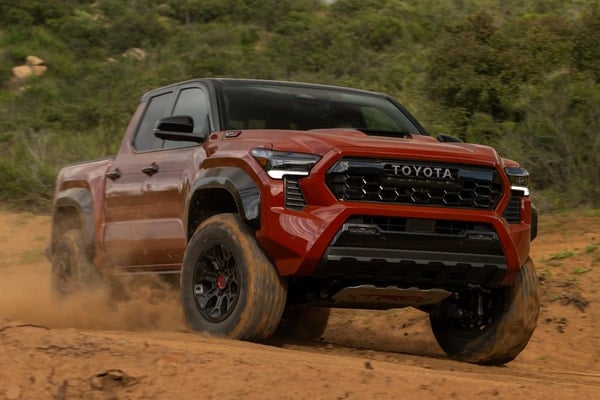Used 2017 Toyota Tundra SR5 Regular Cab Review
Consumer reviews
Read what other owners think about the 2017 Toyota Tundra SR5 Regular Cab.
Most helpful consumer reviews
V8 5.7 versus 4.6 L
Nice truck
Edmunds Summary Review of the 2017 Toyota Tundra SR5 Regular Cab
Pros & Cons
- Pro:Standard V8 power
- Pro:Roomy rear seating for the extended-cab and crew-cab body styles
- Pro:Unique off-road-themed TRD Pro model
- Con:Below-average fuel economy
- Con:Stiff ride
- Con:Feels larger than rivals when driven on tight and congested roads
Full Edmunds Review: 2017 Toyota Tundra Regular Cab
Driving
At slow parking lot speeds, the 2017 Toyota Tundra seems almost nimble thanks to a light steering feel. That same quality persists at higher speeds, however, where it becomes a liability that contributes (along with the big truck's weight and overall dimensions) to the Tundra's ponderous handling. Another downside is the Tundra's stiff ride quality. Though you expect as much with a truck, some rival trucks are more comfortable.
The 5.7-liter V8 impresses thanks in large part to its generous torque output and smooth-shifting six-speed automatic transmission. If you don't think you'll need the Tundra's maximum towing capacity, you'll find the 4.6-liter V8 provides adequate performance with ever-so-slightly better fuel economy, though both engines lag behind the category leaders on this point.
Interior
The 2017 Toyota Tundra features an attractive cabin filled with user-friendly technology. Even base models get the automaker's Entune touchscreen interface with smartphone connectivity, and higher trim levels get larger screens with more capabilities. It's an easy system to use, though we prefer the overall look and functionality of the infotainment systems found in the F-150 (Sync 3) and Ram 1500 (Uconnect).
Seating comfort up front is as good as you'd expect. The rear seats in Double Cab models are noticeably roomier than those of other rival trucks' extended-cab models. The CrewMax crew cab's rear seat is notable for its abundant splayed-out legroom and its reclining seatback that make it arguably the most comfortable spot in the entire truck. The flip-up bottom cushions in back also provide plenty of storage for tools or other valuable items you'd prefer not to leave exposed in the open bed.
Edmunds Insurance Estimator
The Edmunds TCO® estimated monthly insurance payment for a 2017 Toyota Tundra in Ohio is:
not available


